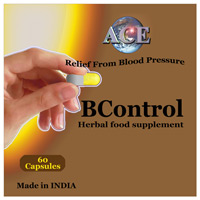
HIGH BLOOD PRESSURE
What is high blood pressure?
High blood pressure or hypertension means high pressure (tension) in the arteries. The arteries are the vessels that carry blood from the pumping heart to all of the tissues and organs of the body. High blood pressure does not mean excessive emotional tension, although emotional tension and stress can temporarily increase the blood pressure. Normal blood pressure is below 120/80; blood pressure between 120/80 and 139/89 is called “pre-hypertension”, and a blood pressure of 140/90 or above is considered high blood pressure. The systolic blood pressure, which is the top number, represents the pressure in the arteries as the heart contracts and pumps blood into the arteries. The diastolic pressure, which is the bottom number, represents the pressure in the arteries as the heart relaxes after the contraction. The diastolic pressure, therefore, reflects the minimum pressure to which the arteries are exposed.
An elevation of the systolic and/or diastolic blood pressure increases the risk of developing heart (cardiac) disease, kidney (renal) disease, hardening of the arteries (atherosclerosis or arteriosclerosis), eye damage, and stroke (brain damage). These complications of hypertension are often referred to as end-organ damage because damage to these organs is the end result of chronic (long duration) high blood pressure. Accordingly, the diagnosis of high blood pressure in an individual is important so that efforts can be made to normalize the blood pressure and, thereby, prevent the complications. Since hypertension affects approximately 1 in 4 adults in the United States, it is clearly a major public health problem.
Whereas it was previously thought that diastolic blood pressure elevations were a more important risk factor than systolic elevations, it is now known that for individuals older than 50 years of age systolic hypertension represents a greater risk.
What causes high blood pressure?
Two forms of high blood pressure have been described--essential (or primary) hypertension and secondary hypertension. Essential hypertension is a far more common condition and accounts for 95% of hypertension. The cause of essential hypertension is multifactorial, that is, there are several factors whose combined effects produce hypertension. In secondary hypertension, which accounts for 5% of hypertension, the high blood pressure is secondary to (caused by) a specific abnormality in one of the organs or systems of the body.
Essential hypertension develops only in groups or societies that have a fairly high intake of salt, exceeding 5.8 grams daily. In fact, salt intake may be a particularly important factor in relation to essential hypertension in several situations. Thus, excess salt may be involved in the hypertension that is associated with advancing age. Genetic factors are thought to play a prominent role in the development of essential hypertension. However, the genes for hypertension have not yet been identified.
What are the causes of secondary high blood pressure?
As mentioned previously, 5% of people with hypertension have what is called secondary hypertension. This means that the hypertension in these individuals is secondary to (caused by) a specific disorder of a particular organ or blood vessel, such as the kidney, adrenal gland, or aortic artery.
- Renal (kidney) hypertension: Diseases of the kidneys can cause secondary hypertension. This type of secondary hypertension is called renal hypertension because it is caused by a problem in the kidneys. One important cause of renal hypertension is narrowing (stenos is) of the artery that supplies blood to the kidneys (renal artery).
- Adrenal gland tumors: Two rare types of tumors of the adrenal glands are less common, secondary causes of hypertension. (The adrenal glands sit right on top of the kidneys.) Both of these tumors produce excessive amounts of hormones (adrenal hormones) that cause high blood pressure. These tumors can be diagnosed from blood tests, urine tests, and imaging studies of the adrenal glands.
- Coarctation of the aorta: Coarctation of the aorta is a rare hereditary disorder that is one of the most common causes of hypertension in children. This condition is characterized by a narrowing of a segment of the aorta, the main large artery coming from the heart. The aorta delivers blood to the arteries that supply all of the body's organs, including the kidneys. The narrowed segment (coarctation) of the aorta generally occurs above the renal arteries, which causes a reduced blood flow to the kidneys. This lack of blood to the kidneys prompts the renin-angiotensin-aldosterone hormonal system to elevate the blood pressure.
High blood pressure is called "the silent killer" because it usually causes no symptoms for many years, even decades, until it finally damages certain critical organs. Poorly controlled hypertension ultimately can cause damage to blood vessels in the eye, thickening of the heart muscle and heart attacks, hardening of the arteries (arteriosclerosis), kidney failure, and strokes.
High salt intake, obesity, lack of regular exercise, excessive alcohol or coffee intake, and smoking may all adversely affect the outlook for the health of an individual with hypertension. Screening, diagnosing, treating, and controlling hypertension early in its course can significantly reduce the risk of developing strokes, heart attacks, or kidney failure. Lifestyle adjustments in diet and exercise and compliance with medication regimes are important factors in determining the outcome for people with hypertension




